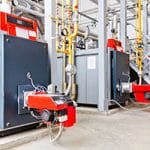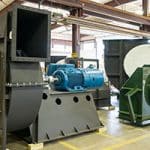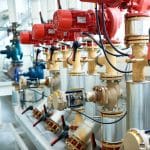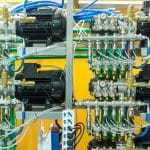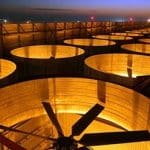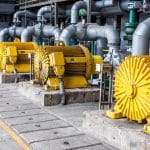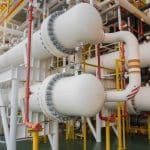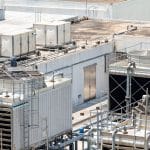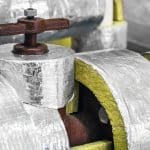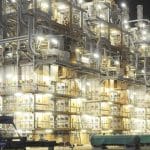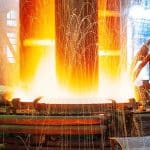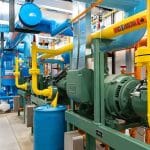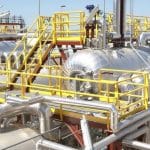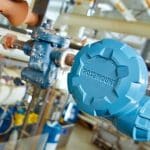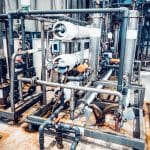The 3 kEys
- Many facilities operate pumps at full capacity regardless of actual demand, leading to excessive wear and energy waste. Don’t.
- The easiest measure to implement with an eye towards energy efficiency is to simply take care of what you have. Develop a structured maintenance program, and stick with it. The benefits are limitless.
- A well-matched pump to the system’s actual demand ensures that energy is not wasted in unnecessary throttling, cavitation, or inefficient flow conditions.
Industrial centrifugal pumps are the backbone of many manufacturing and processing operations. From moving water and chemicals to handling slurries and wastewater, these pumps keep critical processes running.
They can also be one of the largest consumers of energy in a facility, leading to high operational costs and unnecessary energy waste. Facilities Managers play a vital role in optimizing pump performance, reducing energy consumption, and improving overall plant efficiency.
By understanding key efficiency factors—including system design, operational best practices, and maintenance strategies—facilities managers can significantly cut energy waste without compromising reliability or performance. We’ll explore here practical strategies for improving the energy efficiency of industrial centrifugal pumps, supported by real-world case studies and expert insights.
Operational Best Practices to Reduce Energy Use
How the pump is operated plays a crucial role. Many facilities operate pumps at full capacity regardless of actual demand, leading to excessive wear and energy waste. Implementing demand-based controls, such as automated sensors and real-time monitoring, allows pumps to adjust their output dynamically.
Maintaining optimal suction conditions is another key factor. Poor suction conditions can cause cavitation, which not only damages pump components but also reduces efficiency. Ensuring that suction piping is properly sized, avoiding unnecessary bends, and eliminating air leaks can prevent energy losses.
In addition, minimizing unnecessary throttling through control valves improves efficiency. Instead of using control valves to regulate flow, adjusting pump speed using VFDs is a far more energy-efficient approach.
ChemicalProcessing.com published a great paper worth reading, titled Optimize Centrifugal Pump System Efficiency. It’s got some ideas in there you’re going to want to have in your toolbox.
Preventive Maintenance to Sustain Efficiency Gains
The easiest measure to implement with an eye towards energy efficiency is to simply take care of what you have. Even the most efficient pump will lose performance over time without proper maintenance. Worn-out impellers, clogged filters, misaligned shafts, and degraded seals can all contribute to increased energy consumption. A proactive maintenance strategy, including regular inspections, vibration analysis, and lubrication, can prevent energy losses and costly breakdowns.
One critical, yet often ignored aspect is ensuring that pumps operate within their design tolerances. For example, excessive bearing temperatures, misalignment, and improper lubrication can cause frictional losses that increase energy demand. Implementing a predictive maintenance program using IoT-based sensors can help facilities managers track performance metrics in real time and address inefficiencies before they escalate.
A manufacturing plant using predictive maintenance on its centrifugal pumps reported a 15% increase in system efficiency and a 30% reduction in unexpected downtime. By tracking vibration patterns and bearing temperatures with IoT sensors, they were able to schedule maintenance proactively and optimize energy use.
Optimizing System Redesign for Efficiency
One of the most overlooked aspects of pump efficiency is system design. Many industrial facilities operate oversized or improperly selected pumps, leading to excessive energy consumption. A well-matched pump to the system’s actual demand ensures that energy is not wasted in unnecessary throttling, cavitation, or inefficient flow conditions.
A system assessment, including flow analysis and pump selection, should be conducted to ensure that the pump operates within its best efficiency point (BEP). Computational fluid dynamics (CFD) modeling and system audits can reveal inefficiencies that may not be obvious at first glance. PMC PubMed Central published a great article titled CFD Analysis and Optimum Design for a Centrifugal Pump Using an Effectively Artificial Intelligent Algorithm that includes a CFD analysis. It’s a bit wonkish, but it’s a great read.
Upgrading to variable frequency drives (VFDs) allows facilities managers to precisely control pump speed, reducing energy waste during low-demand periods. A detailed DOE study on demand-based pump control in the manufacturing industry showed that facilities implementing real-time monitoring and VFDs reduced pump energy consumption by up to 40%. How Variable Frequency Drives Affect Centrifugal Pumps by West View Cunningham explains how they work.
A food processing plant in the Midwest implemented a system-wide pump audit and discovered that several pumps were significantly oversized. By retrofitting with properly sized pumps and installing VFDs, the facility reduced pump-related energy consumption by 28%, saving over $120,000 annually.
Upgrading to High-Efficiency Pumping Technologies
Technology advancements in pump design have led to the development of high-efficiency models that consume significantly less energy than older pumps. High-efficiency impeller designs, magnetic-drive pumps, and advanced sealing technologies reduce frictional losses and improve hydraulic efficiency.
In some cases, replacing an outdated pump with a high-efficiency model can provide a return on investment within a few years, especially when combined with incentive programs or energy rebates. When upgrading, it’s crucial to consider not just the pump itself, but also the system’s overall efficiency, ensuring that new equipment integrates seamlessly with existing operations.
An analysis by the Department of Energy found that upgrading to high-efficiency centrifugal pumps in industrial settings could yield energy savings of 20–50%, depending on system configurations. Here’s the story they told:
“Configuration is important, as there are opportunities around the use of multiple pumps for multiple demand needs. Due to major renovations at their Pontiac Operations Complex, General Motors implemented three smaller pumps in parallel, replacing one large pump, and it provided significant performance improvement over the single large pump. While most of the pumping requirements could be met by one pump, during periods of high demand the control system would automatically switch on a second pump to maintain the 80-psig discharge head. Since the pumps are the same model, this transition could be achieved smoothly. If two pumps were operating and the flow requirement decreased, one pump would de-energize while the other continued to supply the system needs. The control system was programmed so that during any 24-hour period, a single pump operated as the lead pump with the other two as backups in case additional pumping capacity was required or in case the lead pump failed. Every 24 hours, a different pump was designated as the lead unit. In this manner, all three pumps saw approximately the same amount of running time. Having two pumps act as backup for an operating pump provided additional operating flexibility and system reliability that was not available in the original pumphouse where only one 100-hp pump was in operation.
“To validate the performance improvement of the new system, the electrical input power and water flows to the previous system were measured. After the new system was installed, the electrical power and water flows were again measured. When extrapolated to an annual basis, the energy consumed by the system was reduced from 280,400 kWh to 55,300 kWh—an 80 percent decrease. This represented an annual decrease in energy costs of $11,255. When compared to the additional system cost of about $45,000 that can be allocated to energy efficiency measures, the new system is expected to achieve a payback of four years. In addition to significantly lower energy usage, the inherent redundancy in the new system increased reliability. The parallel pump configuration allowed one pump to be isolated from the system for maintenance or repairs while the others served the complex.”
Correcting Oversizing
To tackle the inefficiencies of oversized pumps, consider the following approaches:
Impeller Sizing. Installing a smaller impeller can help right-size an oversized pump. By reducing the impeller diameter, the pump can deliver the required flow and pressure without sacrificing efficiency. This adjustment ensures the pump operates closer to the system’s actual demands.
Right Sizing. The key to avoiding oversizing is conducting a thorough assessment of the system’s actual needs at the design stage or during retrofits can prevent inefficiencies and prolong the lifespan of the equipment. See Vissers Sales’ article on Right-Sizing your Pump for Maximum Efficiency for some valuable pointers, as well as Proper Pump Selection: Avoid Oversizing Your Pumps in Pumps & Systems.
Utilizing Pump laws and performance curves. These are invaluable tools for understanding how changes in pump operation affect system performance. Leveraging these tools enables precise adjustments to match operational requirements.
Piping Design. The design of the piping system plays a critical role in pump efficiency. By choosing the appropriate pipe diameters and minimizing unnecessary bends or lengths, friction losses can be reduced. A well-designed piping system complements the pump’s capabilities, allowing it to operate efficiently.
The Big Finish
For Facilities Managers, improving the energy efficiency of industrial centrifugal pumps presents a significant opportunity to reduce costs, improve sustainability, and enhance system reliability. By optimizing system design, implementing operational best practices, maintaining equipment proactively, and upgrading to high-efficiency technologies, significant energy savings can be achieved without compromising performance.
With the right approach, centrifugal pumps can be transformed from energy liabilities into highly efficient, cost-saving assets. Investing in efficiency today not only reduces operational expenses but also contributes to long-term sustainability and competitive advantage in the industrial sector




